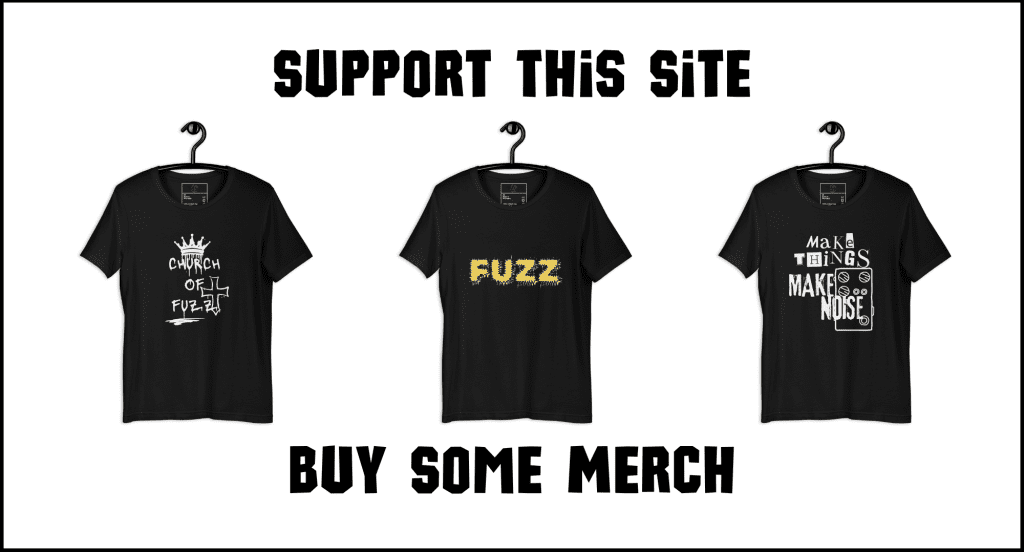If you want to add a little more oomph to your sound, it’s common to use an overdrive or distortion pedal. The two affects have similarities, but there is a difference between overdrive and distortion. Overdrive and distortion are kind of the core guitar effects; if you ask what are guitar pedal does, OD and distortion are usually examples.
But if you’re using a distortion or overdrive pedal, do you know and understand what the different knobs do? Are you able to adjust everything so that you get the tone you want? Let’s explore how overdrive/distortion works so that you can better dial in the sound you’re after.
How Do Overdrive And Distortion Pedals Work?
Basically speaking, both overdrive and distortion clip the electrical signal sent out by the guitar to give it a distorted sound. In the diagram below, the electrical signal and sound wave can be thought of as a regular wave form. Overdrive (in yellow) softly clips the signal to give a little bit of roughness. Overdrive (in red), has hard clipping and squares off the wave.

Take a look at my article on the difference between overdrive, distortion, and fuzz for a bit more of an explanation. If you want to dive even deeper, I’ve also written a guide to diodes in guitar pedals that will explain a bit more how clipping works.
But before a signal is clipped by diodes, it needs to be increased, and that’s usually done with an operational amplifier (op-amp). Here’s a basic op-amp circuit (with hard clipping diodes afterwards):
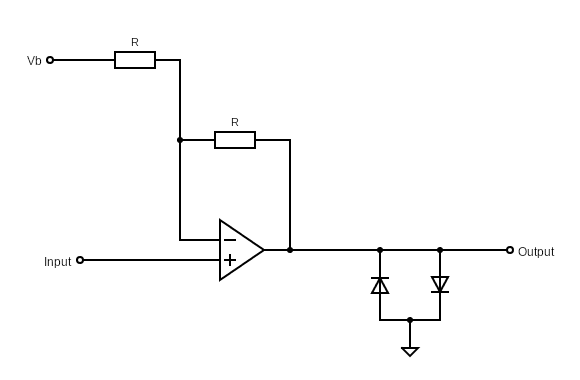
The diagram may look confusing, but basically speaking, the op-amp (the triangle in the diagram), takes an electrical signal, sends it out again through a pair of resistors that are forming a voltage divider, with the difference in the voltage causing the increase in gain.
When the resistor is a potentiometer (which is all the knobs on guitar pedals are), you’re able to change the resistance. More resistance and the signal is boosted more!
So, in order to understand how to use a distortion or overdrive pedal, you need to understand what’s happening inside the pedal, at least basically. Turn the knob, and the electrical signal is increased through the op-amp. Turning the knob increases the voltage difference across the op-amp, increasing the signal.
There’s a little more to it than that, of course. But if you just treat the op-amp as a bit of a black box that just makes things go loud, it’ll do for this explanation.
I’ve linked to some relevant articles for more reading if you really want to get into the guts of how distortion and overdrive work, but this is more of an introductory article that will give you a better idea of how to manipulate these pedals and get the most out of them.
So anyway, for your typical distortion/overdrive pedal, you have the gain/drive/distortion (it’s all the same thing), which is controlled through the op-amp interacting with the drive potentiometer and a couple diodes. You also have a tone knob (also a potentiometer) which just regulates what frequencies come through to emphasise bass or treble using a high pass or low pass filter. And finally you have the volume (sometimes just called level) knob, which is another potentiometer acting as a variable resistor. You can see that potentiometers do a lot to adjust things in guitar pedals.
If that’s too technical for you, that’s OK. This website is about making guitar pedals so I’m probably going a bit deeper than a lot of people want to know. Or maybe you’re starting to get interested and want to learn more about guitar pedal builds!
The big takeaway is that each knob is adjusting the strength of the electrical signal, and the drive knob is actually boosting that electrical signal through the op-amp; the bigger that boost, the more the signal is going to get clipped by the diodes and the more accentuated the effect is.
If you’re after more information on this, I also have an article on how gain knobs work in guitar pedals. It’s similar information to the above, but in more depth.
What The Knobs On Distortion And Overdrive Pedals Do
I’ve already touched on this, but with a better understanding of the electrical parts of a distortion or overdrive pedal, hopefully you have a better understanding of what’s happening in the pedal.
Let’s take a look at each dial.
What The Drive/Gain/Distortion Dial Does On Distortion And Overdrive Pedals
As mentioned, for the purposes of this article, drive, gain, and distortion are all the same thing. Electrically, basically the same thing is happening.
The electrical signal passes through the op-amp, comes out, goes through a potentiometer paired with another resistor to form a voltage divider, then back into the op-amp again. The potentiometer (which is just your gain knob) adjusts the electrical resistance and therefore how much the electrical signal is boosted. From there, the signal passes through pairs of diodes where it’s clipped (where these diodes are positioned will depend on whether you have overdrive or distortion).
The higher the signal is boosted, the more that’s clipped from the diodes.
Boosting the gain will increase the volume quite a bit because you’re boosting the electrical signal, but you’ll also find that more of that signal is getting clipped and you’re getting a more distorted sound.
What The Tone Dial Does On Distortion And Overdrive Pedals
The tone knob adjusts the tone, obviously! This means the dial allows through more bass or treble, depending on how it’s adjusted. The rest of the signal is lost.
So if you want a more twangy treble sound, turn that tone up! If you want it with more bass, adjust it accordingly. This is often done through the use of a simple high or low pass filter, but there are ways to play with these basic RC filters to get some interesting sounds, like the tone filter in a Big Muff which can give you a mid-scoop if you want it.
What The Volume Dial Does On Distortion And Overdrive Pedals
The volume knob simply adjusts the final volume of the signal.
By now the electrical signal has been adjusted for gain/distortion and tone. The final volume knob works by adding resistance to this final signal; less resistance and more of the signal gets through so it’s loud; more resistance and less signal gets through so it’s quieter. Pretty simple.
Take a look at my article on how potentiometers work to get a better understanding of how they can be wired for volume.
How To Adjust The Dials On Distortion And Overdrive Pedals For Good Tone
So we’re finally here…
While I’m sure many people have skipped to this part, hopefully many others have found the technical aspects of distortion and overdrive operation interesting and can use this information to better adjust their pedals.
When finding the tone you’re after, first adjust things without any drive or distortion. This will only muddle your sound and push the volume too much while this setting really should be used to distort the sound rather than add volume.
Get your volume knob to a good point where you’re happy with how loud it is, then go and adjust your tone until the right frequencies are coming through. Once you’re happy with that, now it’s time to start adding some grit via the gain/drive/distortion knob. Of course this will add volume, so adjust your volume knob accordingly.
Resist the temptation to just dial everything up to 11, especially the gain/distortion. Sure, if that’s the sound you’re after, go for it, but you’ll likely find some great sounds with everything a little bit more sensible.
Personally, for the type of music I like to play, which is mostly Blues and Country, I always have at least a little bit of overdrive, even if it’s just adjusted a fraction of a turn. The overdrive gives a more organic sound to my solid state amp and makes it sound a bit more tube-like (that’s kind of the point). If the song is heavier, I’ll dial the gain up a bit, but rarely do I find myself needing the top end of things.
That, of course, gets thrown out the window if we’re talking about distortion with heavier types of music. Sure a lot of classic Punk doesn’t go that distorted, and the same goes for Grunge. And even a lot of Metal can be pretty clean. But certainly there are some sub-genres within the above three that seem to strive for more distorted sounds.
Either way, my advice is to start small and dial it up rather than start loud and dial it down.
Have Fun And Play With It
Ultimately you’re going to have to find your own sound, so have fun and play with it. You can’t dial in anything “wrong,” you may just dial in settings that aren’t as good as others for the type of music you want to play.
Related posts:
 What’s The Difference Between Overdrive, Distortion, And Fuzz?
What’s The Difference Between Overdrive, Distortion, And Fuzz?
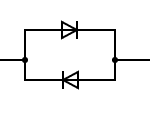 What’s The Difference Between Symmetrical And Asymmetrical Clipping?
What’s The Difference Between Symmetrical And Asymmetrical Clipping?
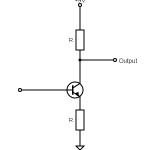 What Is Gain (And How It’s Different From Volume)
What Is Gain (And How It’s Different From Volume)
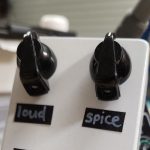 How Does A Drive, Gain, Or Distortion Knob Work?
How Does A Drive, Gain, Or Distortion Knob Work?
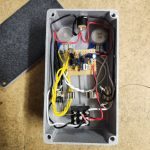 How To Wire Guitar Pedal Enclosures
How To Wire Guitar Pedal Enclosures
 How Do Guitar Pedals Work?
How Do Guitar Pedals Work?
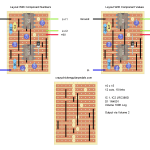 EarthQuaker Devices Acapulco Gold On Stripboard
EarthQuaker Devices Acapulco Gold On Stripboard
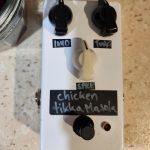 How Do Guitar Pedal (And Guitar) Volume Knobs Work?
How Do Guitar Pedal (And Guitar) Volume Knobs Work?
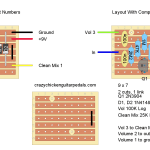 Greer Amps Green Giant On Stripboard
Greer Amps Green Giant On Stripboard
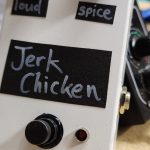 What Do Guitar Pedals Do?
What Do Guitar Pedals Do?
